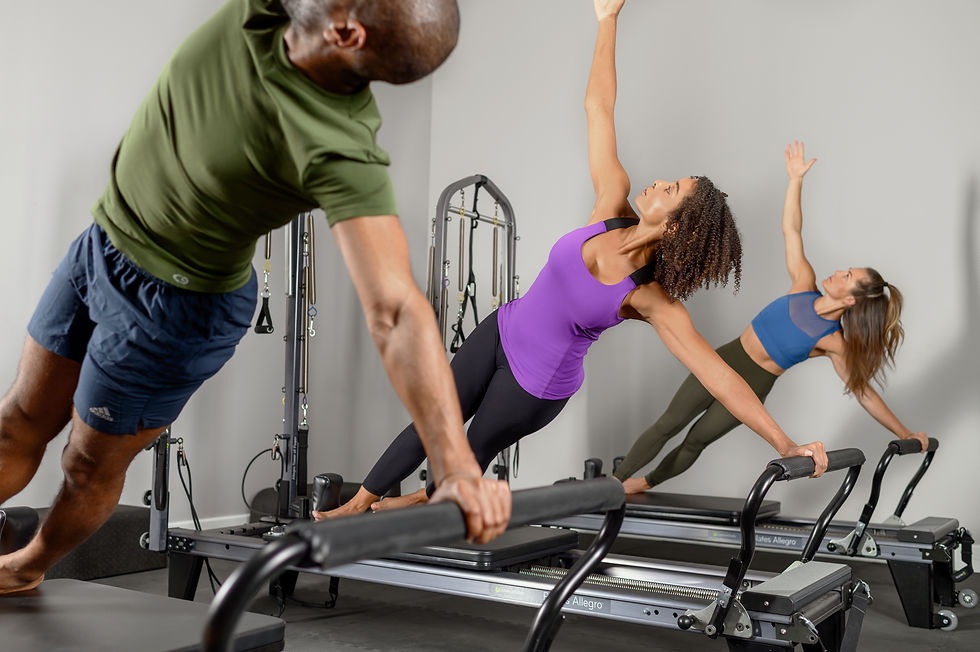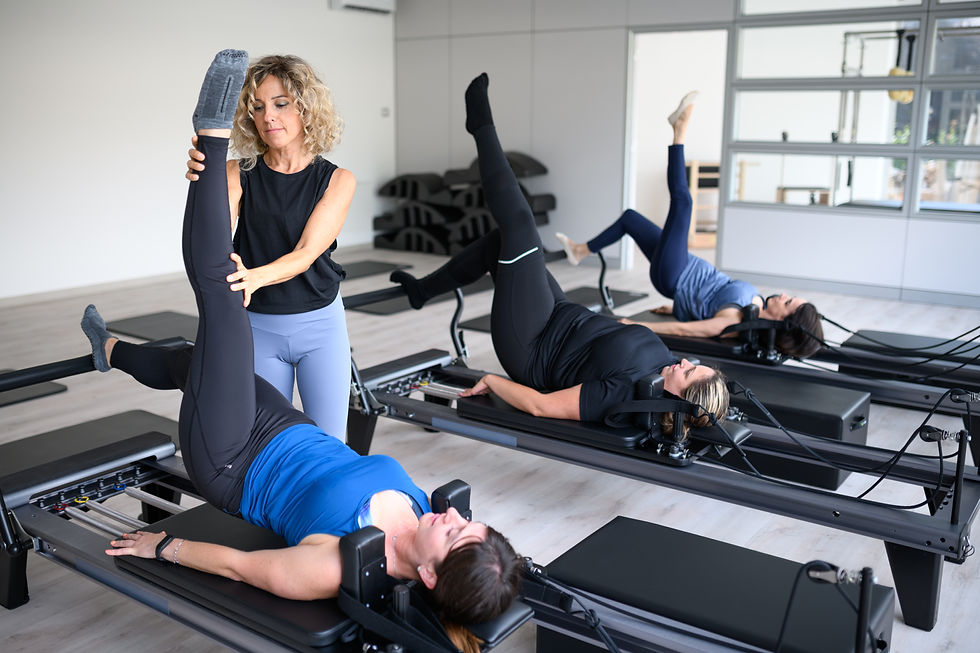Should You Get Certified To Teach Pilates? What to Consider Before Signing Up for a Training
- Jeanine Yutani

- Mar 12
- 4 min read
Thinking about becoming a Pilates instructor? It’s an exciting path—one that blends movement, teaching, and the ability to truly help people feel better in their bodies. But before you dive in, it’s important to understand what’s involved.
Getting certified is more than just learning exercises—it’s an investment of time, money, and energy. The right program will set you up for success, but choosing the best fit takes some thought.
Here are six key things to consider before beginning your journey.

1. Your “Why”: What’s Driving You?
People come to Pilates certification for all sorts of reasons. Maybe you’re passionate about movement and want to share it with others. Maybe you’re looking for a career change, or you’re already in a health and wellness field and want to add Pilates to your skill set.
Before you choose a program, ask yourself:
Do I want to teach full-time, part-time, or just deepen my own practice?
Am I more drawn to fitness-based Pilates or therapeutic movement?
Do I see myself working in a studio, clinic, gym, or even online?
Having a clear sense of your goals will help you choose a program that aligns with your future plans.
2. Comprehensive Certification vs. Mat-Only or Reformer-Only Programs
Not all Pilates certifications are the same, and one of the first decisions you’ll make is whether to go for Mat-Only, Reformer-Only or Comprehensive training.
Comprehensive Pilates Certification Programs – Includes mat and equipment (Reformer, Cadillac, Chair, and Barrels). This is the industry standard for a professional Pilates instructor and opens more doors in studios, clinics, and private practice.
Mat-Only or Reformer-Only Programs – Covers Pilates fundamentals and can be a quicker, more affordable starting point. You’ll be able to teach group classes in some studios, but it may limit where and how you can teach.
If you’re serious about making Pilates a career, comprehensive training is the best choice. But if you just want to teach mat classes or supplement another fitness certification, reformer-only might be enough.
3. The Reputation & Approach of the Program
Not all Pilates programs are created equal. Some follow a classical approach, staying close to Joseph Pilates' original method, while others offer what is considered a more contemporary approach, integrating modern biomechanics and rehab-focused adaptations into the original Pilates repertoire.
Here's what to look for when researching programs:
Accreditation – Does it meet industry standards like NPCP-recognized certifications?
Program Standing & Status – Are you looking for in-house training at your favorite studio or will you be pursuing employment somewhere else?
Philosophy & Teaching Style – Do you want strict classical training or a more adaptable contemporary approach?
Continuing Education Opportunities – Does the program support lifelong learning and offer specialized workshops?
The right program will match your learning style, career goals, and values—so take your time to find a good fit.
4. The Time & Financial Commitment
A comprehensive certification typically requires 450+ hours of coursework, observation, practice teaching, and testing. It’s a big commitment!
Costs vary, but expect to invest anywhere from $3,000 to $7,000+, depending on the program and location. Beyond tuition, also consider:
Manuals, books, and study materials
Private lessons or practice sessions
Exam fees
Travel expenses if training isn’t local
Pilates training is an investment in yourself—so be sure the program fits your lifestyle and budget.
5. Hands-On Experience & Mentorship Matter
It’s one thing to do Pilates, but learning to teach it is a whole different skill. A great training program won’t just teach you exercises—it will help you become a confident, adaptable instructor.
Look for programs that provide:
Hands-on teaching experience – Not just theory, but real-world practice to help prepare you for the job market.
A supportive mentor – Someone who can guide you through the process and help you grow.
A strong community – Learning alongside others makes the journey more fun and rewarding.
6. Your Career Path After Certification
A lot of people think getting certified is the finish line—but really, it’s just the beginning! Building a career as a Pilates instructor takes time, ongoing education, and a little bit of business savvy.
Ask yourself:
Do I want to work in a studio, open my own practice, or specialize in rehab?
Am I comfortable with the realities of the job—early mornings, marketing myself, and continuing education?
How will I keep learning and improving my skills after certification?
Some instructors thrive in fitness-oriented studios, while others focus on therapeutic movement and working with special populations like those with scoliosis, hypermobility, or chronic pain. Thinking beyond certification will help you find your unique path.
Final Thoughts: Is Pilates Certification Right for You?
Getting certified in Pilates is an exciting and fulfilling journey, but it’s not one to rush into. Take time to reflect on your goals, research different programs, and make sure it’s the right fit for your lifestyle.
The best Pilates instructors aren’t the ones with the most impressive technique—they’re the ones who are curious, adaptable, and passionate about movement.
If that sounds like you, then you’re already on the right track. Wherever your movement journey takes you, make sure it’s one that feels authentic, sustainable, and uniquely yours.





Comments